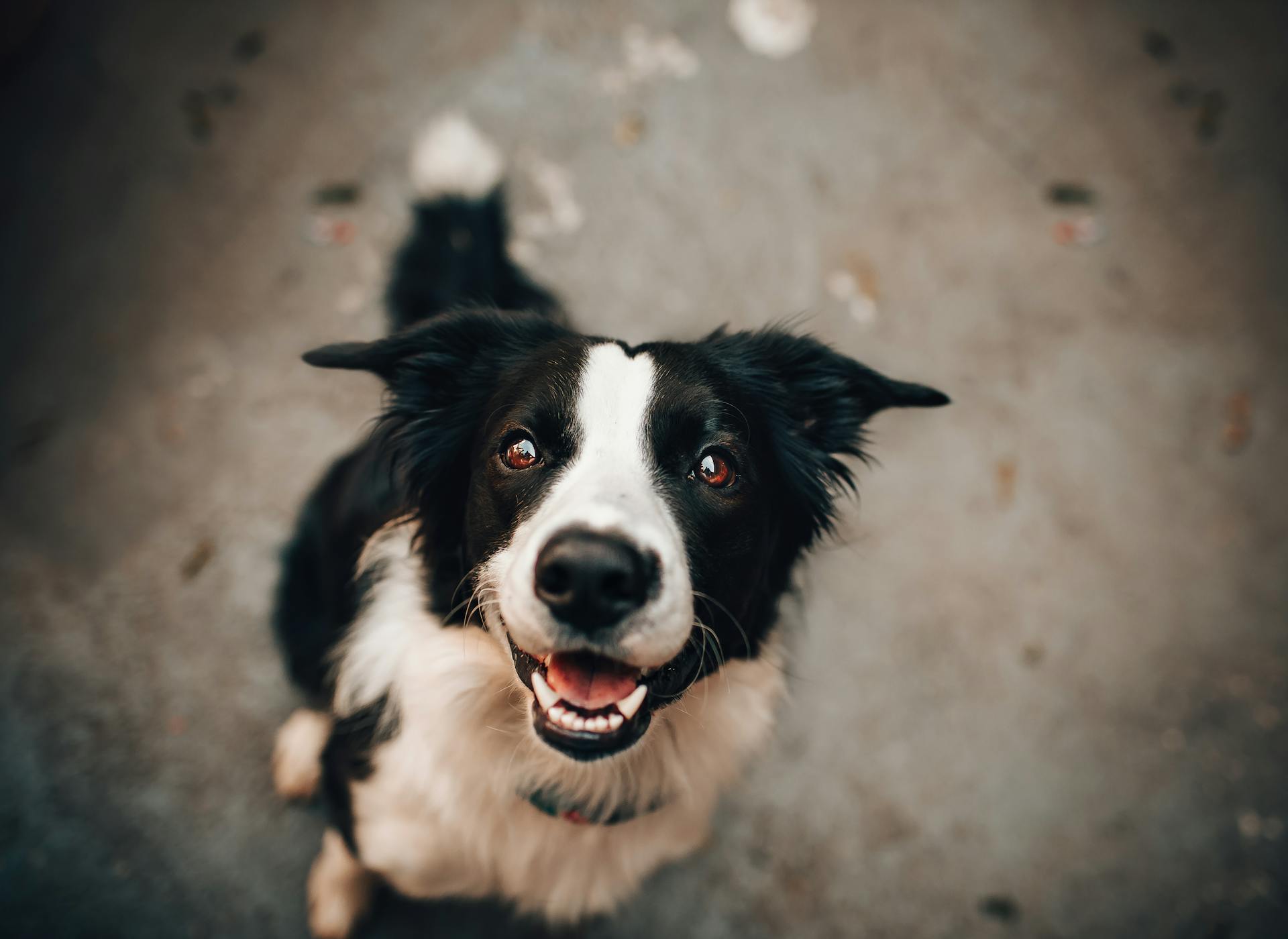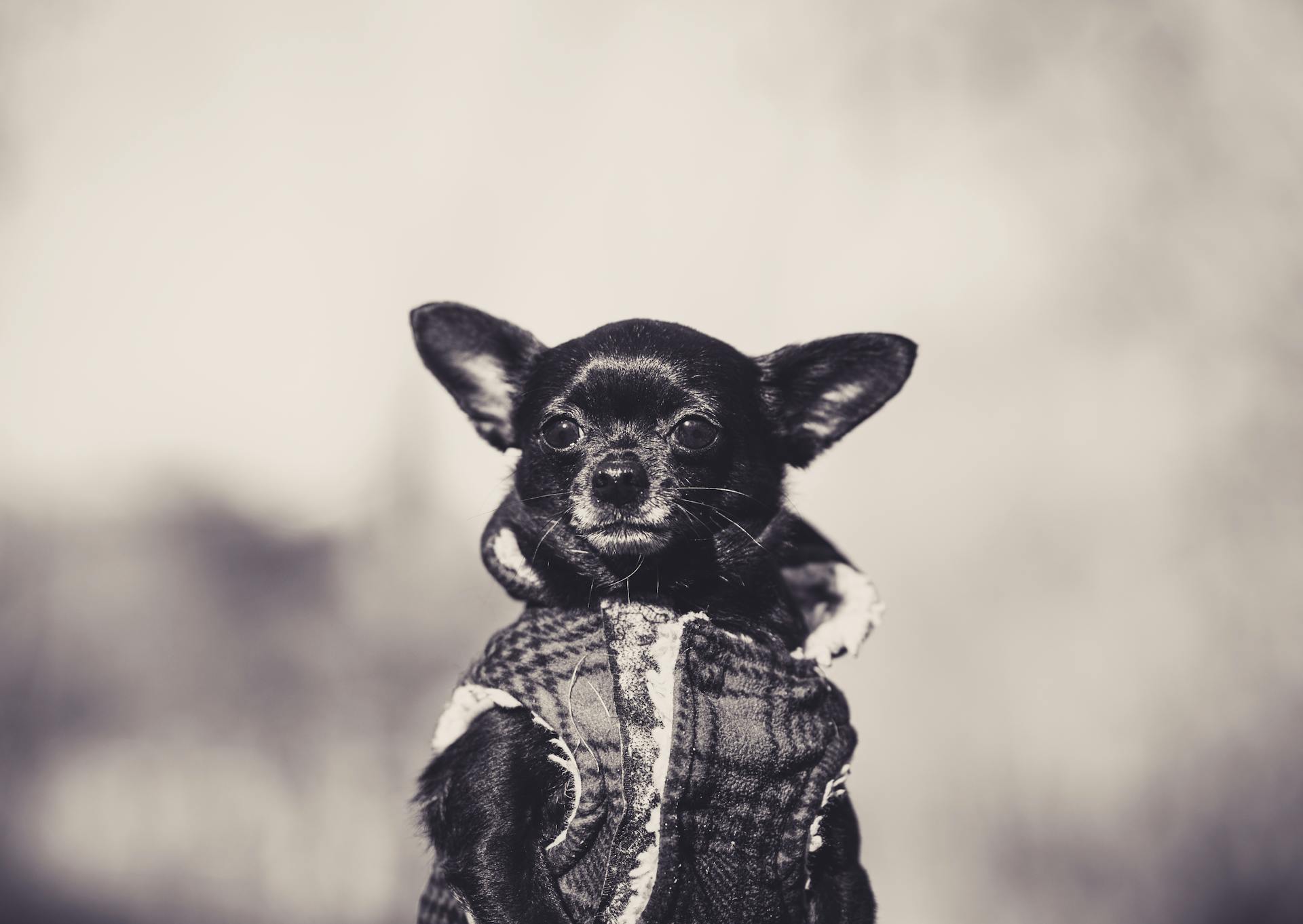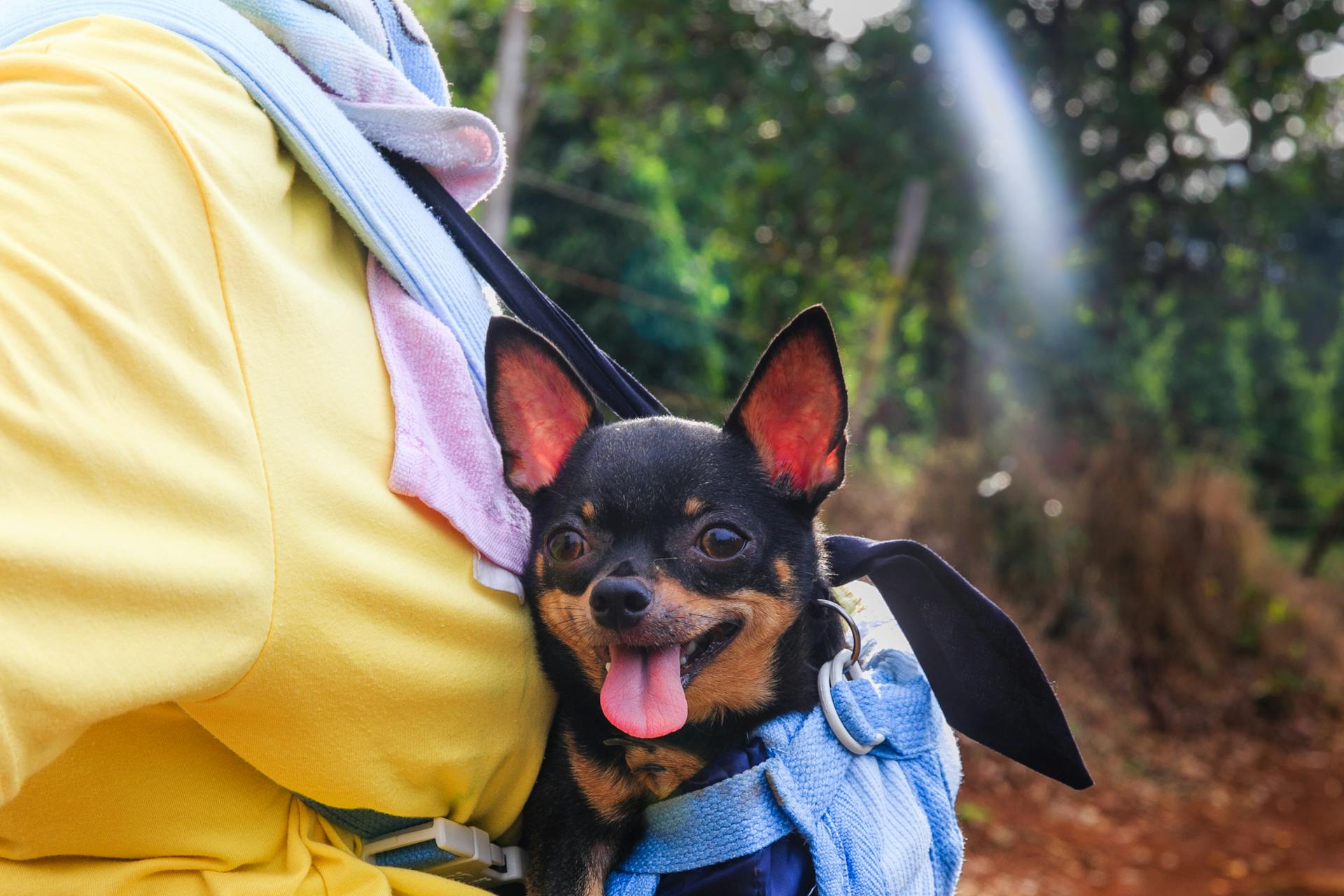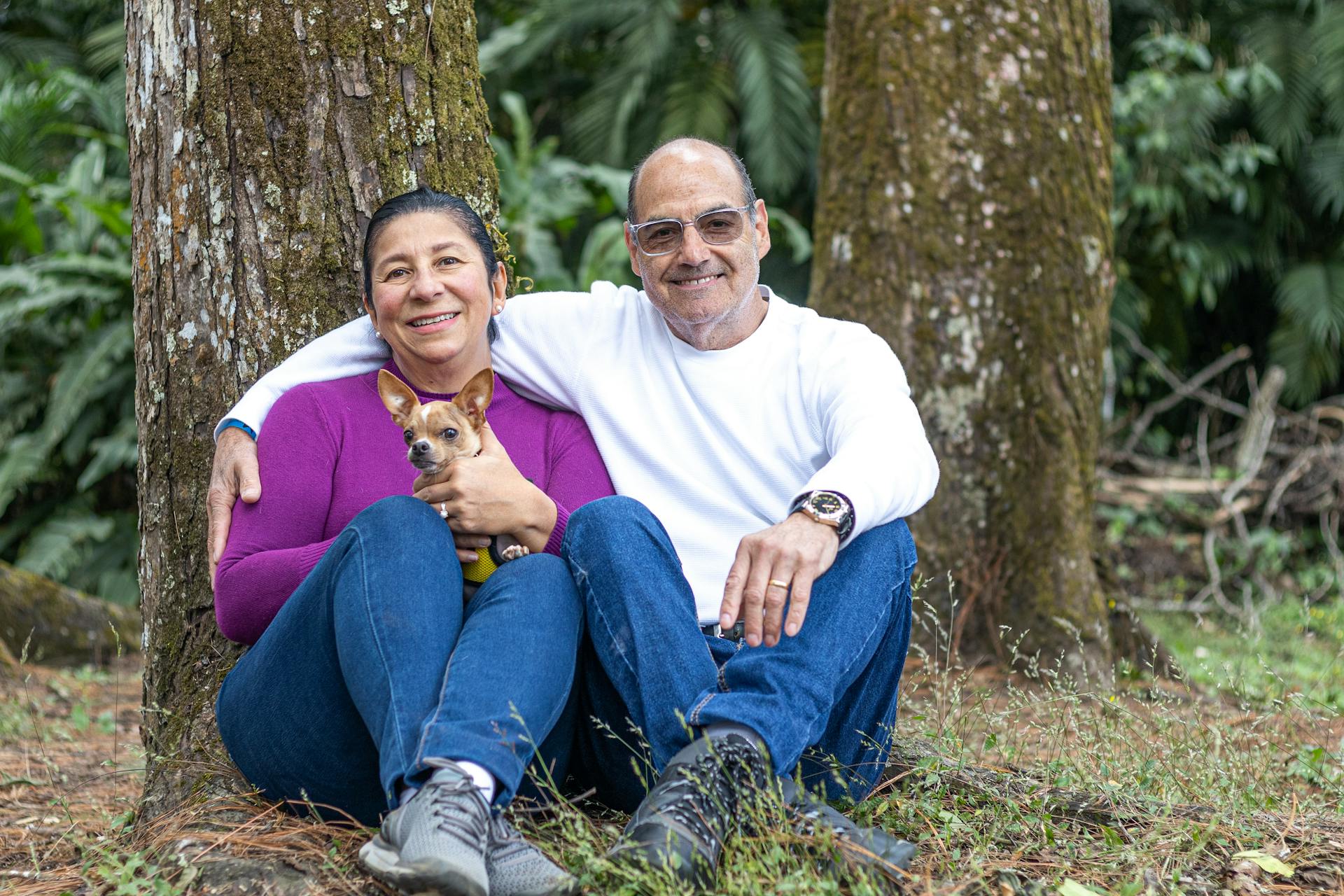
Chihuahuas are one of the oldest dog breeds in the world, with a history that dates back thousands of years. They originated in Mexico, specifically in the states of Chihuahua and Durango, where they were highly valued by the ancient Aztecs and Mayans.
The Aztecs and Mayans believed that Chihuahuas were a symbol of fertility and prosperity, and they often kept them as companions and sacred animals. Chihuahuas were also used for hunting and guarding, and they proved to be skilled and loyal companions.
Despite their small size, Chihuahuas are direct descendants of the ancient Techichi, a dog breed that was known for its courage and intelligence. The Techichi was a small dog that was highly valued by the Aztecs and Mayans, and it's believed that they were the ancestors of modern Chihuahuas.
Intriguing read: Why Are Chihuahuas so Small
The Origins of Dogs
The transition from wolves to dogs is still a bit of a mystery, but scientists have made some groundbreaking discoveries. Before 2016, it was assumed that all dogs were domesticated from wolves about 15,000 to 40,000 years ago.
Worth a look: Do Wolves Attack Dogs
The latest research suggests that modern, domesticated dogs came from two different colonies of wolves on opposite sides of the "Old World", the part of the world that includes Africa, Asia, and Europe, before the existence of the Americas was known. This means that dogs were domesticated independently, from two different locations and at two different times.
The game changed when the Newgrange dog was found in an ancient Irish burial, which was 4,800 years old and had the best-preserved DNA in its bones ever discovered before. This enabled scientists to look directly into ancient dog DNA.
Scientists discovered that the modern dog came from one European area and one East Asian area. At one point in history, there was a decrease in the dog population in Europe, which may have led to the introduction of East Asian dogs to sustain the species.
The wolf origins of dogs date back at least 15,000 years, although some estimates push this timeline back to as much as 40,000 years ago. This divergence likely occurred when a faction of wolves started to scavenge near human encampments, initiating a symbiotic relationship that would eventually lead to the domestication of the dog.
You might enjoy: Old Chihuahua Dogs
The Domestication Process
The domestication of dogs was a gradual process that happened over many generations. It was facilitated by natural selection, where wolves that were less fearful and more adaptable to human presence had a survival advantage.
These wolves had access to food scraps and protection, which allowed them to thrive. As human societies evolved, so did the role of these early dogs, diversifying into guardians, hunters, herders, and companions.
Dogs were selectively bred to enhance traits desirable for specific roles, such as herding, hunting, guarding, or providing companionship. This selective breeding laid the groundwork for the emergence of distinct dog breeds.
The relationship between humans and dogs deepened with the advent of agriculture and the rise of civilizations. Dogs were able to exploit human weaknesses for food and protection, leading to a mutually beneficial relationship.
It's believed that dogs domesticated themselves through "survival of the friendliest" rather than humans winning "survival of the fittest." This means that docile wolves came to humans for food and protection, and over time, they evolved into the dogs we know today.
The physical changes in dogs, such as their small size and flat faces, occurred because of their friendliness. This process is called self-domestication, and it's been observed in other animals, such as foxes in Russia.
Explore further: Wolves Attack Dogs
Relationship Between Dogs and Wolves
Dogs and wolves have a long and complex history.
The transition from wolf to dog is still not fully understood, with scientists only recently discovering that modern dogs came from two different colonies of wolves on opposite sides of the Old World.
Dogs and wolves have been interbreeding since domestication, making it difficult to figure out the exact origins of modern dogs.
Dogs still retain some wolf characteristics, such as their pack mentality and tendency to lick to greet people.
In fact, genetic studies suggest that dogs diverged from wolves at least 15,000 years ago, although some estimates push this timeline back to as much as 40,000 years ago.
The divergence likely occurred when a faction of wolves started to scavenge near human encampments, initiating a symbiotic relationship that would eventually lead to the domestication of the dog.
Dingoes, a unique breed of dog found in Australia, are an early offshoot of all modern dog breeds and are genetically closer to wolves than many domesticated breeds.
Explore further: History of Domestication of Dogs
Dingoes have been geographically isolated from wolves and domestic dogs for thousands of years, which has allowed them to develop distinct characteristics.
Some dogs, like dingoes, still hold close genetic ties to wolves, making them look like wolves or exhibit wolf-like personality traits.
These genetic ties are a reminder of the shared history between dogs and wolves.
The History of Dog Domestication
The domestication of dogs is a fascinating story that's still being unraveled by scientists. The transition from wolves to dogs is estimated to have occurred between 15,000 to 40,000 years ago.
Scientists used to think that all dogs came from a single domestication event in either South China, Mongolia, or Siberia. However, new research suggests that modern dogs came from two different colonies of wolves on opposite sides of the "Old World".
The discovery of the 4,800-year-old Newgrange dog in an ancient Irish burial helped scientists to look directly into ancient dog DNA. This led to the conclusion that modern dogs came from one European area and one East Asian area.
See what others are reading: How Old Do Chihuahuas Get
It's possible that dogs domesticated themselves by exploiting human weaknesses for food and protection. This theory is supported by the idea that "survival of the friendliest" was more important than "survival of the fittest" in the early days of dog domestication.
Dogs have undergone significant physical changes since their wolf ancestors, with breeds like Chihuahuas and French Bulldogs evolving from wolves over time. This is thought to be due to self-domestication, where friendly wolves adapted to human presence and eventually became domesticated dogs.
The relationship between humans and dogs deepened with the advent of agriculture and the rise of civilizations. Dogs were selectively bred to enhance traits desirable for specific roles, such as herding, hunting, guarding, or providing companionship.
Dingoes, which have been geographically isolated from wolves and domestic dogs for thousands of years, are an early offshoot of modern dogs. They are truly an early offshoot of all modern dog breeds, between the wolf and today's domesticated dogs.
The domestication process was a gradual, unintentional process facilitated by natural selection. The wolves that were less fearful and more adaptable to human presence had a survival advantage, given their access to food scraps and protection.
Worth a look: Domestic Dog Breeds
Understanding Dog Origins
Dogs originated from wolves, and the transition from wolf to dog is still a bit of a mystery.
Scientists used to think that all dogs were domesticated from wolves around 15,000 to 40,000 years ago, but now they believe that modern dogs came from two separate colonies of wolves on opposite sides of the "Old World".
The discovery of a 4,800-year-old dog in an ancient Irish burial helped scientists to understand the origins of dogs better. This dog had the best-preserved DNA in its bones, which allowed scientists to compare it with other ancient dog DNA samples.
The DNA analysis revealed that modern dogs came from one European area and one East Asian area. This suggests that dogs were domesticated separately in different parts of the world.
Dogs and wolves have continued to interbreed since domestication, which has made it difficult for scientists to figure out the exact origins of dogs.
For your interest: Old Chihuahuas
The physical changes in dogs, such as their small size or unusual features, occurred because of their friendliness and self-domestication. This theory is proven by the case of fox domestication in Russia.
Some dogs are still closer to wolves than others, and scientists are trying to understand which breeds are the closest to their wild ancestors.
The story of domestic dogs begins with their wild ancestors, the wolves, and genetic studies suggest that dogs diverged from wolves at least 15,000 years ago.
Sources
- https://www.dogster.com/lifestyle/do-all-dogs-come-from-wolves
- https://www.nbcnews.com/science/science-news/yes-tiny-dogs-descended-wolves-rcna13316
- https://retrieverman.wordpress.com/2008/12/05/a-crazy-theory-on-chihuahua-origins/
- https://theconversation.com/from-wolf-to-chihuahua-new-research-reveals-where-the-dingo-sits-on-the-evolutionary-timeline-of-dogs-181605
- https://www.pointpet.com/blogs/news/from-wolves-to-chihuahuas
Featured Images: pexels.com


